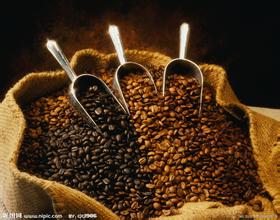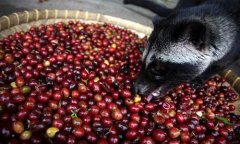A brief History of our Coffee drinking Chinese Coffee Market
If you jump out of the framework of making coffee and look at China's coffee retail market from a big market point of view. You will see that about 30% of consumers are 40-55 years old. At the same time, there is another big cake on the market, about 25-30 years old.
From the perspective of spending power, people will naturally choose the former. From the perspective of product preferences, you will find that the former's favorite is often Blue Mountain and Manning, while the latter is more likely to choose espresso, or the more fashionable light roasted coffee.
Here is an interesting phenomenon, these two types of consumers are almost "old and out of touch", more popular "Blue Mountain School" does not recognize the "geisha school" (Geisha). So, I call this phenomenon at both ends, "No bitter, no coffee, no sour, no boutique."
This phenomenon is very unique, but it reflects the history of the development of cafes in China. Around the early 1990s, we did not experience the second baptism of the coffee industry brought about by Starbucks. The transition from Nestle coffee to coffee of a certain quality was not Italian, but the more popular and avant-garde Taiwanese brand "Shangdao" at that time. Today, please do not scoff at the Shangdao brand. In a sense, it makes people know the origin for the first time and understand the mellow nature of coffee. It is the first deep understanding of coffee. Coupled with the fact that Taiwan is affected by the Japanese tradition of slow roasting, the perception of coffee in that area is that coffee is bitter, but it can have a good texture and a long return to sweetness.

Let's take a look at the background of the coffee industry chain in that period. The vast majority of coffee farmers have never drunk their own coffee. The roaster gets coffee beans from bulk buying and selling, and the varieties of coffee are mixed. Instead of considering the unique flavor, it is better to bake it deeper, reflecting the caramel feeling and mellow thickness brought by the baking, and has a long aftertaste. Then at the bottom of the supply chain, espresso is not so popular in Europe, keeping in mind that the golden formula, 14g of powder, extracts two cups of 30ml's espresso. Fat represents not only freshness, but also the quality of coffee at that time.
Mark Prince recalls that at alt coffee, people would cheer as long as they had 80% of the fat in the cup. (the picture is from the Internet)
At this point, I hope you will look at what has happened in the past with a rational attitude. Because today, more than 90% of customers still drink coffee mixed with milk. After all, the Italian style with a strong caramel feel is easier to blend with milk. Moreover, even if it is hand-brewing and siphon, many customers still want their coffee to have a certain texture. More importantly, as long as there is nothing wrong with the coffee, the deep-roasted coffee can still show the sweetness.
And then, today. Our reform and opening up has made great strides, at least, it must be faster than the evolution of coffee; at least, we seem to be a little bit in line with international standards. Of course, the step is too big, what is involved, it is not very clear, but it will definitely be shallow. We can not only find all kinds of sour, all kinds of fruit flavors, but also start to show endless fantasies about sour extension, what's more, we limit the definition of flavor to sweet and sour, cocoa, and caramel.
I'm lucky. I once felt the obvious citrus feeling with ecstasy. People around me scoff at this kind of sour espresso. I seldom listen to what I say, but I think to myself, "is this really espresso?" "I learned a little bit today. At that time, the bean was out of the pot before it was finished.
In fact, jump out of my personal feelings. Let's see how the supply chain of our coffee has changed. In our current industry, many links begin to pay attention to some humanistic care. But more importantly, in the face of the growing demand for coffee, roasters are more inclined to the flavor peculiar to the place of origin.
"if Kenya has such a distinct plum flavor", "with bourbon beans, the coffee beans of Selvado are as sweet as cherries." how can I use the ingredients for sashimi to make Fish Filets in Hot Chili Oil with a strong flavor? At the same time, baristas are starting to win. WBC in 2003 Paul Basset began to create a precedent for the production of espresso with high powder, which made it possible for shallow baking. Then, James Hoffman unexpectedly uses a single product to make Italian concentration. today, there are two world champions in the country of origin, which used to be the territory of coffee farmers.
Leaving aside some of the disadvantages and commercialization of WBC, the history of WBC is also the evolution of boutique coffee and an integration of coffee farmers, roasters and baristas in the supply chain.
Important Notice :
前街咖啡 FrontStreet Coffee has moved to new addredd:
FrontStreet Coffee Address: 315,Donghua East Road,GuangZhou
Tel:020 38364473
- Prev

The characteristics of Blue Mountain Coffee the Origin of Blue Mountain Coffee Fine Coffee
Blue Mountain Coffee refers to coffee brewed from beans from the Blue Mountains of Jamaica. According to the grade, it is divided into Jamaica Blue Mountain Coffee and Jamaican Alpine Coffee. The Blue Mountains are located in the east of the island of Jamaica (Jamaica). Because the mountain is surrounded by the Caribbean Sea, whenever the weather is clear, the sun shines directly on the blue sea, and the peaks reflect the bright blue light of the sea.
- Next

Is Kopi Luwak really worth that much? Price of Kopi Luwak on the market
The real Indonesian Kopi Luwak is collected from the droppings of a local wild animal called Paradoxurus hermaphroditus. The coconut cat is a timid nocturnal animal that takes advantage of the night to eat ripe coffee fruit during a bumper harvest on the coffee plantation. However, they cannot digest the seeds, that is, coffee beans, and follow them with their feces.
Related
- Does Rose Summer choose Blue, Green or Red? Detailed explanation of Rose Summer Coffee plots and Classification in Panamanian Jade Manor
- What is the difference between the origin, producing area, processing plant, cooperative and manor of coffee beans?
- How fine does the espresso powder fit? how to grind the espresso?
- Sca coffee roasting degree color card coffee roasting degree 8 roasting color values what do you mean?
- The practice of lattes: how to make lattes at home
- Introduction to Indonesian Fine Coffee beans-- Java Coffee producing area of Indonesian Arabica Coffee
- How much will the flavor of light and medium roasted rose summer be expressed? What baking level is rose summer suitable for?
- Introduction to the characteristics of washing, sun-drying or wet-planing coffee commonly used in Mantenin, Indonesia
- Price characteristics of Arabica Coffee Bean Starbucks introduction to Manning Coffee Bean Taste producing area Variety Manor
- What is the authentic Yega flavor? What are the flavor characteristics of the really excellent Yejasuffi coffee beans?

